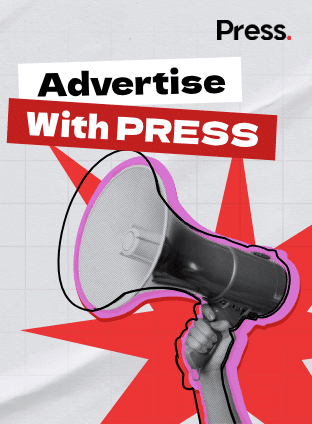Key Takeaways
- AI content detectors analyse text patterns to estimate whether content was generated or heavily assisted by AI.
- Accuracy varies widely between tools, especially against newer models and human-edited (hybrid) text.
- Use detectors as guidance, not judgement. Editorial oversight and people-first quality standards remain essential.
- Hybrid content and multilingual text (Malay, English, Chinese) present unique challenges and higher misclassification risk.
- Sustainable SEO = helpful, trustworthy content. Focus on user value, not merely “passing” a detector.
Table of Contents
ToggleIn Malaysia’s 2025 digital marketing landscape, many companies use generative AI to draft blog posts, product descriptions, and landing pages. At the same time, teams worry about authenticity, originality, and how search engines treat AI-assisted work.
That’s where AI content detectors enter the workflow. But what do they really do, how reliable are they, and how should Malaysian businesses integrate them into SEO without overrelying on them? This article explains the essentials, grounded in current guidance and practical considerations for Malaysian teams.
What Is an AI Content Detector?
An AI content detector is software that analyses textual features such as token predictability, perplexity, syntax patterns, and structural regularity, to estimate the likelihood that a text was produced (or heavily assisted) by an AI model rather than written purely by a human. Many tools combine multiple methods (ensemble approaches).
Peer-reviewed evaluations show mixed performance across popular detectors (e.g., GPTZero, Copyleaks and others). In some tests, overall detection accuracy for AI-generated text was reported as low as ~27.9% in certain tools, while human-written text was often identified more accurately. Results vary by model (e.g., GPT-4 vs earlier models), domain, and editing. The takeaway: treat scores as probabilities, not binary verdicts.
Why AI Content Detectors Are Widely Used Today
1) Sheer volume of AI-written text
Teams can now produce drafts at unprecedented scale. Detectors act as a traffic light to triage what needs human review first (e.g., very templated or repetitive copy).
2) Editorial quality control
Even when content is human-edited, detectors help surface overly predictable or generic passages so editors can punch up clarity, voice, and local relevance before publishing.
3) Compliance & brand safety
Many organisations add detectors to their governance stack (alongside plagiarism checks, style guides, and fact-checking) to reduce risks around low-effort “scaled” content, near-duplicate pages, or undisclosed automation.
4) Reputation management
False positives exist, but detector signals can still prompt a second look on sensitive pages (YMYL topics, thought leadership, regulatory content) where credibility is critical.
5) Marketplace & platform expectations
Advertising networks, marketplaces, and some enterprise clients increasingly expect content provenance and basic QA signals. Detectors provide a lightweight way to document review steps.
6) Operational efficiency
When you’re publishing at scale (such as product catalogs, landing pages, blog networks) detectors help prioritise human time toward items most likely to need rewriting or localisation.
7) Training & coaching
In content teams, detector feedback can be used as a coaching aid, helping writers identify patterns that read as formulaic or “machine-like,” and improve burstiness, specificity, and examples.
8) Early warning against over-automation
Scores trending upward across a domain can be a canary in the coal mine that your workflow is leaning too hard on automation at the expense of originality and user value.
Read More: How Businesses Can Use Multilingual SEO in Malaysia
Why It Matters for SEO in Malaysia (2025)
1) Search engine policy and ranking signals
Google has stated that using automation or generative AI is not automatically penalised. What matters is whether the content is helpful, reliable, and created for people, rather than primarily to manipulate rankings.
Google’s Quality Rater Guidelines (2025) directs raters to assign Lowest quality when all or almost all main content is copied, paraphrased, embedded, or reposted with little to no effort, originality, or added value, often characteristic of scaled/low-effort content.
Generative AI may be involved in such pages, but AI use alone doesn’t determine the rating; quality and user value do.
2) Brand credibility and local expectations
For Malaysian audiences, perceived authenticity and local relevance strongly influence trust and engagement. If content reads generic, machine-like, or thin, users disengage, hurting dwell time, conversions, and indirectly your SEO outcomes.
3) Risk control and content governance
Detectors can screen large volumes of text for potential issues, including quality concerns, repetitiveness, or excessive automation. However, their limits (especially for Malay/Chinese and hybrid edits) mean they should complement, not replace, editorial review and fact-checking.
How AI Content Detectors Work
Technique | What it measures | Implication for businesses |
Probability modelling | Likelihood that sentences match patterns learned from AI-generated text | High AI-likelihood scores signal a need for human review and revision |
Perplexity / surprise metrics | How predictable or “flat” the text is | Overly predictable or templated text may be flagged |
Ensemble models | Multiple algorithms combined | Often more robust than single-metric tools |
Linguistic feature mapping | Syntax, vocabulary diversity, tone shifts, burstiness | Can detect “machine-style” regularity even after light human edits |
Important: These tools output scores, not certainties. Studies consistently show wide variance in tool performance, with weaker detection for cutting-edge models and hybrid human-AI text.
Read More: Microsoft Copilot for SEO: Can It Help Malaysian Businesses?
Core Aspects to Consider for Malaysian Businesses
Accuracy & Reliability
Multiple studies find detectors struggle with advanced models (e.g., GPT-4) and hybrid content (AI draft + human edits). False positives and inconsistent scores across tools are common. Relying on a single detector or threshold is risky.
Model Updates & Evolution
It’s an arms race. As AI writing improves, detection becomes harder. Surveys and stress-tests show that tool performance can drop in real-world conditions, especially under paraphrasing or adversarial rewriting. Be cautious of headline accuracy claims that don’t generalise to your content.
Hybrid and Localised Text
Malaysia’s multilingual context, which blends Malay, English, Chinese, and code-mixed writing, poses real challenges. Detectors trained mainly on English often misclassify non-native English writing; localisation and mixing languages can further degrade accuracy. Expect higher variance and review such content carefully.
Use-Case Fit
- High-volume, low-risk content (e.g., product snippets): detectors can triage drafts for human review.
- High-stakes or authority pages (e.g., thought leadership, regulated categories): keep human-led drafting and expert review at the core, using detectors only as secondary signals.
Real-World Patterns
- Different detectors can return conflicting scores (e.g., one flags 90% AI-likely, another says 40%). That spread is normal and underscores the need for multiple tools plus editorial judgement.
- Malaysian media and academic work have raised false-positive concerns for non-native English writing. For businesses, this means detector scores should never be the sole basis for compliance checks or employment/academic decisions.
- Unchecked AI-generated product descriptions can become repetitive and generic, depressing engagement metrics (dwell time, CTR, conversions). Local nuance and human rewrites restore performance.
Read More: Content Creation and Growing Your Malaysian Business in 2025
Common Misconceptions
“Detectors are perfectly accurate.”
False. They remain inconsistent, especially against newer models and hybrid edits.
“If it’s AI-generated, Google will penalise my site.”
Not by default. Google focuses on helpfulness, reliability, and people-first intent. Abuse (e.g., scaled, low-effort pages made primarily for ranking) is what triggers trouble.
“Bypassing detection improves SEO.”
Not necessarily. Tactics that “fool” detectors often hurt readability and value. SEO performance aligns with user benefit, not detector evasion.
“Language doesn’t matter for detection.”
It does. Detectors trained on English can misclassify Malay/Chinese/mixed text and non-native English writing.
Best Practices for Malaysian Businesses
- Pair AI with human editors. Use AI for ideation and drafts; require fact-checking, localisation, and style edits.
- Use multiple detectors, interpret cautiously. Treat scores as triage signals; review outliers manually.
- Maintain editorial logs. Track who edited what and when; note factual sources and localisation choices.
- Train teams on ethical AI & SEO policy. Define acceptable use, verification standards, and multilingual review steps.
- Stay current. Revisit search guidance and your tools regularly; both change quickly.
- Measure user value. Monitor on-page engagement, conversions, and feedback. These are the real north stars.
Ethical and Legal Considerations
- Disclosure: While not always required, transparent notes like “AI-assisted, human-edited” can build trust when appropriate.
- Copyright & originality: Ensure AI outputs do not reproduce protected text; use plagiarism checks and manual comparisons for sensitive pages.
- Regulatory compliance: In finance, healthcare, education and other regulated sectors in Malaysia, insist on expert human review and clear attribution.
- Brand trust: Overreliance on automation can erode voice and credibility. Balance efficiency with authentic, locally resonant writing.
Conclusion
For Malaysian businesses in 2025, AI content detectors are useful assistants, not final arbiters. Success in SEO won’t come from “passing” a detector, it comes from serving your audience with accurate, relevant, and trustworthy content. Combine AI for speed, human expertise for judgment, and detectors for screening and QA. That’s how you build durable performance, not just short-term rankings. With the expert help of an experienced PR agency that helps you navigate this newly changing landscape, your company can profit well from it.
Frequently Asked Questions About SEO Content Detection
What Is An AI Content Detector Used For In SEO?
It flags text that appears AI-generated so teams can prioritise review, editing, and compliance checks.
Are AI Content Detectors Accurate?
They can catch some AI text, but error rates are high, especially with advanced models and human-edited content. Treat outputs as signals, not verdicts.
Can I Use AI-Written Content For SEO In Malaysia?
Yes, if it’s helpful, accurate, locally relevant, and human-edited. Google evaluates quality and intent, not the mere method of creation.
Which AI Detector Is Best For SEO Content?
No universal winner. Use two or more tools, compare results, and make final calls via editorial review.
Do AI Content Detectors Directly Affect Google Rankings?
No. Google ranks on quality, usefulness, and trust signals. However, low-effort scaled content (often associated with abuse) can hurt you.
How Should Malaysian Businesses Manage AI-Assisted Content Ethically?
Set internal policies, disclose when appropriate, keep firm editorial oversight, localise for Malaysia, and measure user value over time.


